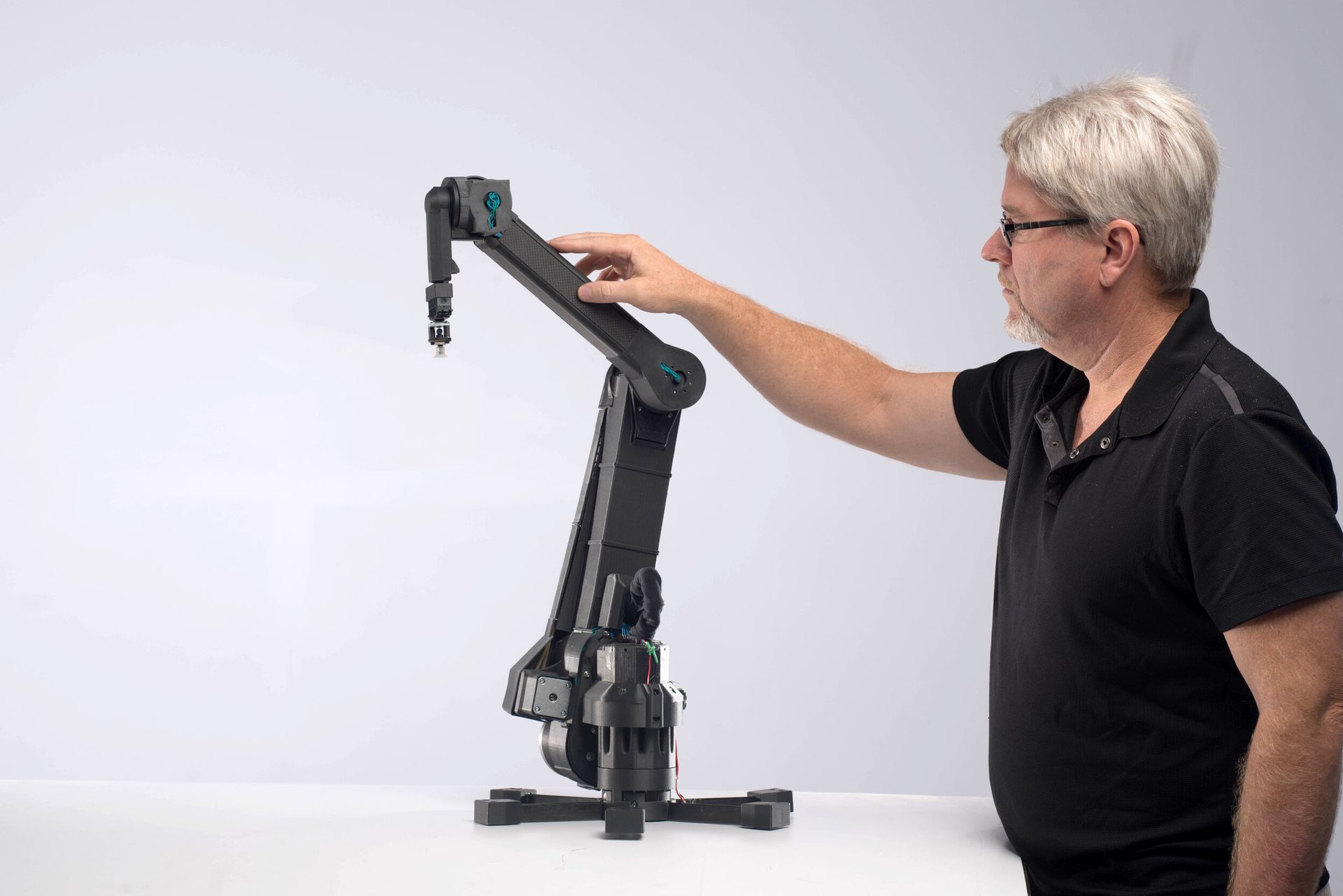Crafting high-precision robots no longer requires vast budgets or proprietary parts. Today, you can leverage open-source hardware kits to build sophisticated, accurate machines—even on a shoestring. In this deep-dive guide, you’ll discover actionable techniques, best-in-class components, and real-world case studies that empower you to design pinpoint-accurate robots using community-driven platforms.

You’ll learn:
- Why open-source hardware accelerates innovation
- How to select and calibrate high-precision components
- Firmware and control-loop optimizations for sub-millimeter accuracy
- Sensor integration strategies for real-time feedback
- Head-to-head comparison of top open-source kits
- Frequently asked questions
Table of Contents
- Introduction: Democratizing Precision Robotics
- Why Open-Source Hardware?
- Core Components for High-Precision
- Method 1: Selecting High-Performance Servos & Motors
- Method 2: Rigorous Mechanical Calibration
- Method 3: Advanced Control-Loop Tuning
- Method 4: Sensor Fusion & Feedback
- Top Open-Source Kits Compared
- Case Studies: miniArm & AhaRobot
- Best Practices & Developer Tips
- Frequently Asked Questions
- Conclusion
1. Introduction: Democratizing Precision Robotics
You want your robot to move with surgical accuracy. But expensive, closed-source industrial arms have long been the only way to hit sub-millimeter repeatability. Enter open-source hardware kits—community-driven platforms that pack high-precision digital servos, modular frames, and transparent code into affordable packages.
In this guide, you’ll harness open-source innovation to design robots that:
- Operate consistently in research, education, or light-industrial settings.
- Adapt rapidly, letting you swap modules or tweak firmware as needs evolve.
- Scale affordably, from single-axis sliders to 6-DOF manipulators.
We’ll ground every recommendation in vetted research and real-world projects, embedding references naturally so you can dive deeper whenever you like.
2. Why Open-Source Hardware?
- Lower barrier to entry. Publicly available schematics and BOMs cut purchasing friction.
- Rapid innovation. Community contributions speed up feature rollouts and bug fixes.
- Transparent design. You see exactly how components interlock, enabling pinpoint optimizations.
- Cost efficiency. DIY assembly slashes MSRP without sacrificing performance.
“Open Robot Hardware (ORH) projects have proliferated thanks to rapid prototyping tools and robust community practices, delivering high-impact kits across robotics domains.” (Yale Engineering)
3. Core Components for High-Precision
Your accuracy hinges on selecting the right building blocks. Focus on:
- Digital servos / stepper motors. Low backlash, high resolution.
- Rigid frames & linkages. CNC-cut aluminum or 3D-printed ABS with reinforced infill.
- High-resolution encoders. Optical or magnetic sensors for closed-loop feedback.
- Precision linear rails. Profile rail or ball screw assemblies for smooth motion.
- Quality microcontrollers. ARM Cortex-M or Atmega328 variants with native timer support.
4. Method 1: Selecting High-Performance Servos & Motors
You need torque without jitter. Look for:
- Coreless digital servos with metal gear trains (e.g., MechDog uses 8 coreless servos to deliver high accuracy and force) (Hiwonder)
- Closed-loop BLDC motors paired with absolute encoders.
- Micro-stepping drivers for stepper motors to smooth out motion.
Actionable steps:
- Review datasheets for torque ripple and holding torque.
- Compare encoder resolutions: aim for ≥12-bit feedback.
- Test stall torque vs. speed curve in your expected load range.
5. Method 2: Rigorous Mechanical Calibration
Even the best servo can’t correct sloppy mechanics. Calibrate by:
- Backlash measurement. Drive the joint to both limits, record positional offset.
- Geartrain testing. Replace plastic pulleys with metal variants to cut elasticity.
- Linkage stiffness analysis. Use finite-element software or manual deflection tests.
“Limiting factors include geartrain performance, encoder precision, and linkage stiffness—addressing each is crucial for sub-millimeter accuracy.” (Reddit)
6. Method 3: Advanced Control-Loop Tuning
Optimal PID parameters unlock peak accuracy. Implement:
- Auto-tuning routines. Let the microcontroller sweep gains and settle on ideal P/I/D values.
- Feedforward control. Anticipate load dynamics to reduce overshoot.
- Adaptive gains. Adjust PID coefficients in real-time based on velocity or payload.
Quick wins:
- Embed a deadband to ignore sensor noise.

- Limit integral wind-up to prevent runaway errors.
- Log positional error history for offline analysis.
7. Method 4: Sensor Fusion & Feedback
Combine multiple data streams for rock-solid positioning:
- IMU + encoder fusion. Compensate for external shocks using a Kalman filter.
- Vision-based correction. Use AprilTags or ArUco markers for absolute pose calibration.
- Force/Torque sensing. Detect contact and adjust grip in assembly tasks.
“AhaRobot’s control system optimization and whole-body teleoperation enable stable, accurate remote tasks through imitation learning.” (arXiv)
8. Top Open-Source Kits Compared
| Kit Name | Core Processor | Actuators | Repeatability | Price (USD) | Best For |
|---|---|---|---|---|---|
| miniArm | Atmega328 (Arduino) | 6× Digital servos (metal gears) | ~0.5°/axis | $120 | Beginners & educators |
| TurtleBot 4 | NVIDIA Jetson Orin | Differential drive + depth camera | ~1 cm linear | $1,500 | ROS research |
| Opentrons OT-2 | ARM Cortex-M | High-precision syringe pumps | ±50 μm | $15,275 | Lab automation |
| AhaRobot | Custom ARM board | 12× brushless motors + encoders | <0.2°/axis | $3,200 | Teleoperation & R&D |
Table sources: miniArm (RobotShop Canada) · TurtleBot 4 (robots.ros.org) · OT-2 (Opentrons.com) · AhaRobot (arXiv)
9. Case Studies: miniArm & AhaRobot
- miniArm (Arduino-based).
- 6-axis arm with open-source code and expansions.
- Users achieve sub-degree repeatability after tuning gear backlash.
- Ideal for prototyping pick-and-place demos (Oz Robotics).
- AhaRobot (Bimanual manipulator).
- Low-cost yet high-performance design.
- Control-system innovations yield <0.2° joint accuracy.
- Enables complex remote tasks using a custom teleop interface (arXiv).
10. Best Practices & Developer Tips
- Document every change. Use version control for both hardware CAD and firmware.
- Engage the community. Report issues upstream to benefit everyone.
- Modularize design. Keep joints, frames, and controllers interchangeable.
- Prototype fast. 3D-print test mounts before committing to CNC parts.
- Automate testing. Write scripts that sweep motors across full range daily.
11. Frequently Asked Questions
Q1: How tight should my belts be?
Aim for minimal slack without adding excessive friction. A 1–2 N tension per belt is a good starting point.
Q2: Can I mix stepper and servo joints?
Yes—just ensure you sync control loops and compensate for differing dynamics.
Q3: Which firmware frameworks support precision kits?
- ROS 2 with
ros_controlplugins. - Arduino IDE for Atmega-based arms.
- Micro-ROS on real-time MCUs.
12. Conclusion
Designing high-precision robotics with open-source hardware kits is now within your reach. By carefully selecting components, calibrating mechanically, tuning control loops, and leveraging sensor fusion, you’ll hit sub-millimeter repeatability—without proprietary lock-in.
Start with a kit like miniArm or TurtleBot 4, apply the methods above, and join the vibrant robotics community driving tomorrow’s innovations—today.
Further Reading & Resources
- Open Robot Hardware Review (IEEE) (Yale Engineering)
- miniArm on RobotShop (RobotShop Canada)
- Opentrons OT-2 Robot (Opentrons.com)
Ready to build your own precision robot? Share your progress and questions below!


